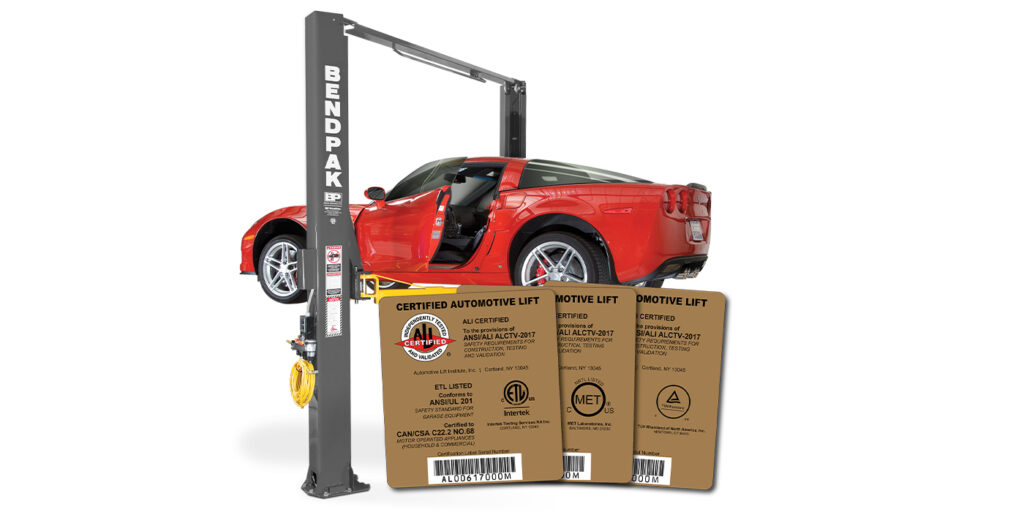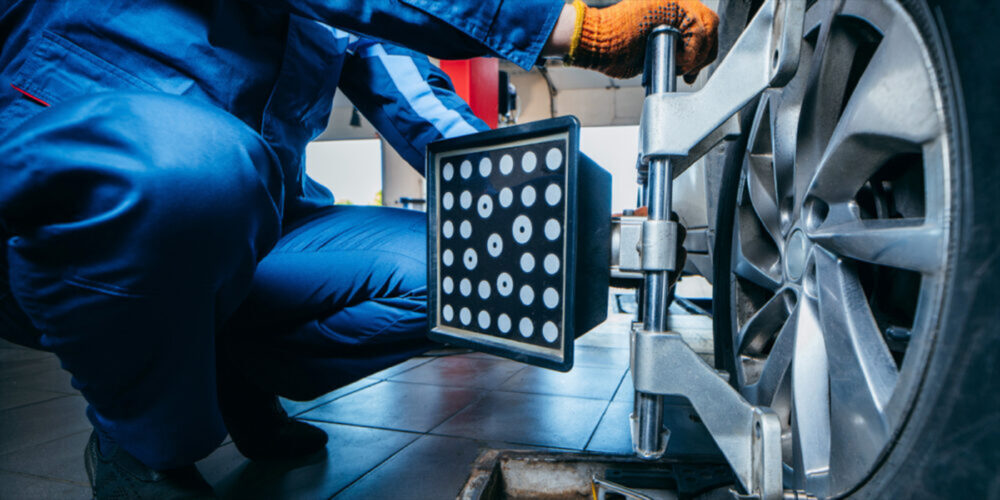Safety is obviously a top concern when it comes to choosing a car lift to hold thousands of pounds above your head. But how do you know if a lift is safe? In the United States, no government agency tests lift safety. That means responsibility for choosing a safe lift rests with the purchaser. It also means there are a lot of questionable claims about what makes one lift “safer” than another.
Here are three common myths about car lift safety — and the facts you need to know to protect yourself and your team.
1. Some lifts are “more certified” than others. A lift is either ALI Certified or it’s not. That’s it. There’s no “extra” certification available.
The Automotive Lift Institute (ALI) runs the only accredited lift certification program in North America. Through the ALI Lift Certification Program, car lifts are independently tested to validate they meet all the requirements of ANSI/ALI ALCTV, the safety standard covering the design, construction, and performance of auto lifts. This standard specifies not only what to test, but how to test it. So, no matter where a lift is manufactured, where the steel comes from or how it is made, every lift goes through the same testing process.
Testing includes verifying the structural integrity of all the lift’s systems and components, proper functioning of its controls and load-holding devices, proper lowering speeds, and overload protection. Lifts are loaded to 150% of their rated capacity to verify performance. The certification process also includes confirming appropriate instructional materials are provided with the lift and that the manufacturing facility meets quality control requirements.
2. A thicker column means the lift is safer. While it may seem logical that a thicker, heavier column would be sturdier and thus, safer, than one made of thinner steel, engineering principles prove that isn’t true. Just consider how much stronger and lighter modern cars are than their heavy old counterparts from the 1950s through the 1970s!
Remember, the ANSI/ALI ALCTV safety standard applies equally to all vehicle lifts regardless of column design. All ALI Certified Lifts are proven capable of raising and holding at least one and half times their rated load capacity. Using more steel doesn’t make the lift safer, it just makes it heavier.
3. Higher lifting capacity = greater safety. Never buy a lift by the pound. A lift’s rated load capacity simply tells you how much vehicle weight it’s designed to support. It’s not a measurement of safety. A lift with a higher rated load capacity isn’t automatically any safer than one with a lower capacity.
Plus, you may not even need that extra capacity. The average curb weight of a vehicle in the U.S. is 4,156 pounds, according to a 2020 report from the Environmental Protection Agency (EPA). Even half-ton trucks only weigh 5,000 to 5,500 pounds. A standard 10,000-pound capacity two-post lift can handle most passenger vehicles.













